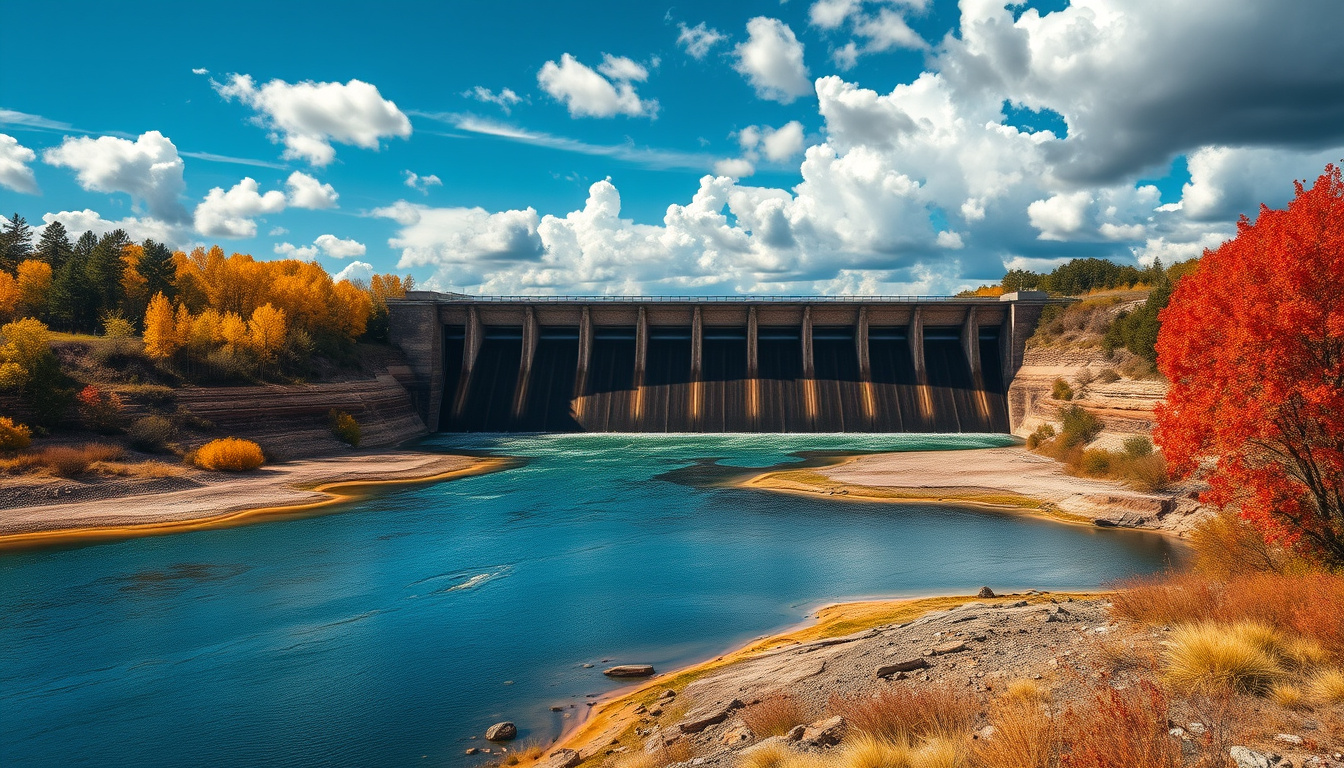Dams have long been touted as marvels of modern engineering, offering vital services such as water supply, flood control, and recreational opportunities. However, the increasing realization that they are not impervious structures has spurred a necessary discourse on their impermanence. As we delve into the complexities of dam construction and maintenance, one particularly pressing issue emerges: sedimentation. This ongoing phenomenon sheds light on the ephemeral nature of these hydraulic giants and poses critical questions for sustainable water management.
Sedimentation: The Unseen Foe
At the core of the sedimentation problem lies an often-overlooked reality: rivers, beyond being mere carriers of water, also transport vast quantities of sediment every year. For instance, Lewis and Clark Lake, created by a dam at the confluence of Nebraska and South Dakota, faces the grave threat of sediment accumulation. Since its construction in the 1950s, the lake has already lost about 30% of its storage capacity, with projections indicating it could be half-full of sediment by 2045. This impending scenario highlights how an apparent nuisance, in the form of sediment, is becoming a slow-moving crisis for reservoirs worldwide.
The natural flow of sediment is critical in maintaining healthy river ecosystems. It fuels floodplains, creates habitats for diverse wildlife, and reinforces riverbanks against storms. However, the majority of sediment settles in reservoirs, significantly diminishing their capacity and utility. As these reservoirs fill with dirt, they transform from valuable water storage systems into shallow ponds, severely limiting their function for recreation and affecting local economies reliant on these activities.
Debunking Solutions: The Dilemma of Dredging
Logically, one might think the simplest solution to sediment buildup would be to remove it—dredging has been a staple of water management for centuries. Indeed, excavators and suction dredgers are capable of extracting sediment, yet the task is fraught with challenges. The scale of sediment accumulation can be massive; for example, the Lewis and Clark Reservoir receives around 5 million tons of sediment annually—an amount equivalent to filling 200,000 semi-trailers each year.
Furthermore, the dredging process is fundamentally inefficient. It operates on a one-to-one ratio: removing a cubic meter of sediment only yields the same volume in water storage, making it economically cumbersome compared to the significant input invested in these dams. In addition, sediment removal can be complicated by the moisture content of the sediment and potential contamination from upstream debris, which complicates disposal processes and necessitates strict regulatory compliance.
The Flow Continuum: Letting Sediment Pass
Another management strategy involves allowing sediment to flow downstream naturally. While this method seems advantageous, it too presents complications. Popular techniques, such as using low-level outlets to release turbid water, often fail to account for the gradual buildup of sediment further back in the reservoir. As sediment settles over years, most systems reach a critical point where sediment cannot flow freely without drawing down reservoir levels, leading to wasted water and potential downstream ecological impacts.
Conversely, flushing methods, which involve releasing water rapidly to dislodge sediment, create their own set of obstacles. While they can resuspend sediment, they also risk overwhelming downstream ecosystems with sudden nutrient surges, potentially causing harmful algal blooms.
Addressing Erosion: A Proactive Approach
Beyond attempting to manage the sediment that has already flowed into reservoirs, a more proactive approach involves mitigating erosion upstream. Sustainable land-use practices can play a crucial role in diminishing sediment loads entering reservoirs. Innovation in soil conservation, vegetation management, and reforestation efforts can significantly reduce upstream erosion, thereby enhancing the longevity of existing dams.
However, managing sizable watersheds can be a monumental task, especially at the scale of thousands of square miles. Such extensive areas require continuous commitment from multiple stakeholders, involving community engagement and consistent policy implementation to ensure effective sediment management.
The Future of Dams: A Tale of Impermanence
The growing challenges surrounding sedimentation exemplify the transient nature of dams in our evolving landscape. While dams provide essential services, their sustainability hinges on effective management strategies that acknowledge their impermanence. As older structures begin to reflect the sedimentation effects of decades, the focus must shift toward finding innovative solutions that are not only technically feasible but also environmentally responsible.
In conclusion, as we continue to grapple with the management of water resources in an era marked by climate change and growing populations, the necessity for a comprehensive understanding of dams and sedimentation becomes ever more critical. By engaging with these complexities, we can work towards sustainable infrastructure that honors the delicate balance of our natural environments, fostering resilience for both human and ecological communities in a rapidly changing world.
Ready to get in the game and start making money on Pump.fun? DogWif Tools is the #1 memecoin sniper tool for becoming a Pump.fun millionaire. Get DogWif Tools today and become a memecoin dev!








